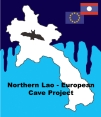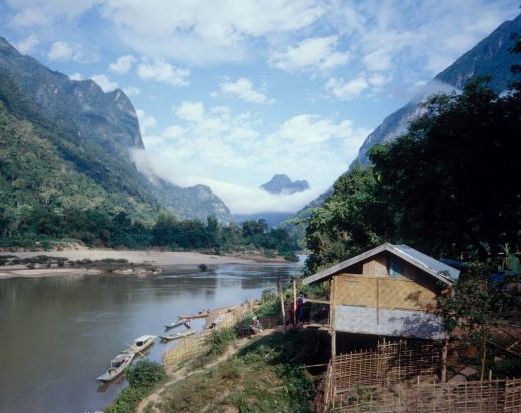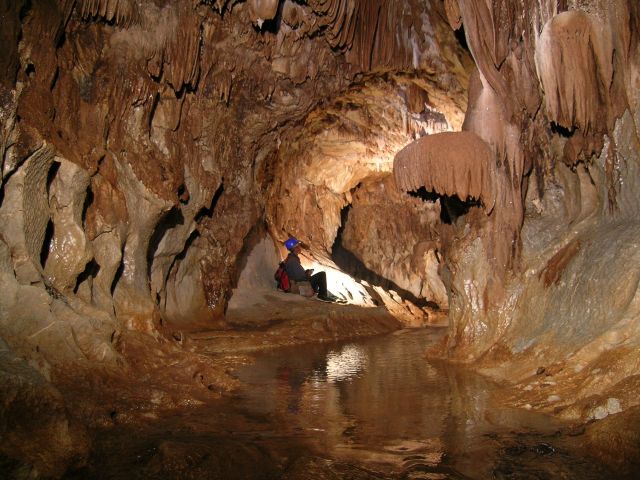| Laos 2009 Expedition to Houaphan
and Oudomxay
Expedition date: 11.-25. January 2009 |
 EuroSpeleo Project FSUE
EuroSpeleo Project FSUE |
The Laos 2009 team had a very successful expedition
to Oudomxay and Vieng Thong in Northern Laos. The most significant
finding and major highlight since the expeditions started in 2002 is the
exploration of the Chom Ong cave system 25 km Northwest of Oudomxay
town. The system stretches along a 4 km long mountain ridge and has a
parallel running and interconnecting fossil and river passage. It was in
just 5 days explored to a length of 13.5 km with several wide open side
passages remaining. It ranks now as the longest cave in Northern Laos
and is one of the top 20 in all Laos. The typical passage dimension is
20-25 m width and 20-30 m height. Two huge overlaying halls mark the
connection of river and fossil passage with each 100m lenght, 30 m width
and ceiling heights of 30-50 m.The cave is a trough cave and can be
entered near the stream inlet and left at the outtflow. The full
traverse takes 3.5 hours with additional 3 hours return walking time
from Chom Ong village! The cave was pushed at the last day in a 15 hour
trip to it current length.
The cave is currently developed as a cave for ecotourism. We received
full support from the provincial tourism office in cooperation with Mr.
Siegfried Moser from the German Development Service while staying in
Chom Ong village. The director invited us during the farewell diner to
return again to Laos and promised a Oudomxay province cave entrance
directory.
The visit of Vieng Thong yielded 3.7 further caving km with Kokai cave
as most remarkable finding
The
expedition visited this area with the main objective of a systematic
search and documentation of caves along the road. The project spent one
week and found several river caves within walking distance. The longest
system
Tham Nam
Mai, known
from 2007,
was
completed within two days. Lica Ersek, who works
as postdoc at the karst group of Prof. Gideon Henderson at Oxford
University, extracted two stalagmites to investigate the climate change
of the region out of the speleothem data. Approval of the National Park
authority was given prior to the extraction of the relative small
stalagmites. The expedition spent the last two days in a remote area 75
km North of Vieng Thong. Tham Kokai turned out to be rather big after a
50 m crawl. The main passage continued with a width of 20-25 meters and
15 m height straight into the mountain with hundreds of meters of dry
sinter basins filled with sinter pearls of 3-5 cm diameter.
The cave
ends currently at a narrow 15 cm wide window with strong wind and a big
passage behind. It is blocked by sinter formations and needs manual
widening.
Total 15 km of caves have been mapped during the 2
weeks. The project will return again to Oudomxay in January 2010.

The Team 2009
|







